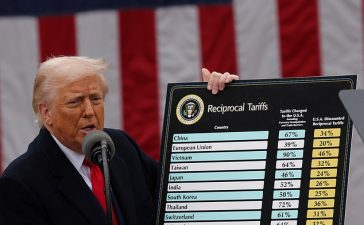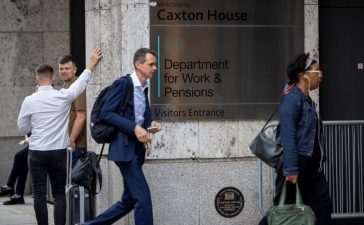Unlock the Editor’s Digest for free
Roula Khalaf, Editor of the FT, selects her favourite stories in this weekly newsletter.
The Scots have form on daring financial innovation. Before the Scottish Enlightenment’s David Hume, Adam Ferguson and Adam Smith, there was John Law. An intellectual pioneer, he was the first to advocate monetary stimulus through paper money only partially backed by real assets.
Law’s native Scotland never accepted his ideas, but the latest thinking of the Scottish National party could well be a sequel to his magnum opus, which was subtitled “a Proposal for Supplying the Nation with Money”. At its party conference last week, the SNP leader and Scotland’s first minister Humza Yousaf said his government would issue its own bonds for the first time, to finance infrastructure developments.
The power to issue such Scottish gilts (which traders have inevitably decided to call “kilts”) was given to Holyrood as something of a sop after Scots voted to stay in the United Kingdom in the 2014 referendum. It has never been used. There are good reasons to think things should remain that way.
Above all, Scotland’s cost of borrowing would surely be far too high to be worth it. The “kilt” market would be small and illiquid. Kilts would be issued by a subnational government that is already dependent on transfers from the rest of the country to make ends meet. Scotland does not have its own central bank, and there are a few eurozone countries with advice about what could go wrong when you borrow in a currency that may be yours but which you do not control.
It is not clear if there will be a guarantee by the UK government — though whether a UK prime minister would really let a Scottish government default if it came to that is cause for speculation — nor of stabilising purchases by the Bank of England. It is also not outside the realm of possibility that Scotland might hold another referendum and decide to leave the UK — so putative investors would have to price in currency, convertibility or political risk as well.
Beyond a captive audience of committed nationalists willing to put their money where their mouth is, it is hard to see investors buying kilts without a hefty premium over equivalent gilts. And long-term gilt yields are already the highest they have been since the global financial crisis. If there was a good time to try this experiment, it was while interest rates could be locked in at record lows, before 2022.
Then again, investors have been known to let hope trump experience. Argentina, not a country famous for being kind to its creditors, managed to place a hundred-year-maturity bond in 2017, at a yield of 7.9 per cent (a cost of borrowing Scotland would be lucky to obtain). By 2020 it was in default.
For some investors, of course, the high risk — and the high risk premium to go with it — is a gamble worth taking. The other piece of exotic bond news last week was that the price of five-year Venezuelan government bonds jumped by 70 per cent after the US said it would relax some sanctions on the country. Those who invested in that distressed market in the past few years have done well.
Ideally, fixed-income securities — the clue is in the name — should not be seesawing all over the place. Yet even investors in the most fundamental bond market of all are currently licking their wounds. US Treasuries, against which the entire financial system is ultimately benchmarked, have dropped dramatically this year and last.
When the safest of assets takes investors on such a ride, what hope is there for kilts? Scotland should remember what happened when France took Law’s advice: his paper money scheme funded the Mississippi Bubble, which blew up spectacularly and produced bank runs, riots, and Law’s bankruptcy. When it comes to public finances, boring is best.









